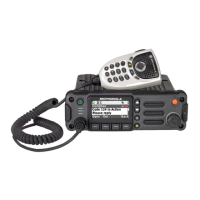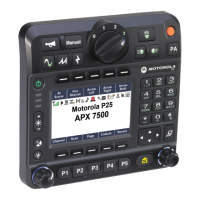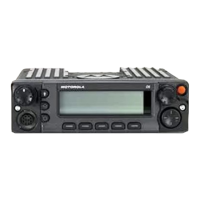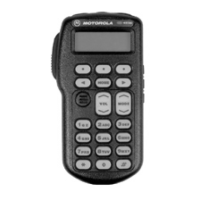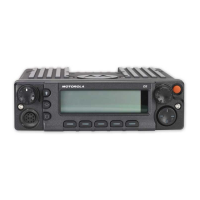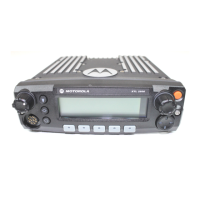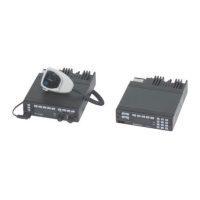
Do you have a question about the Motorola Astro APX Mobile 05 control head and is the answer not in the manual?
Information on occupational use restrictions and compliance with FCC RF energy limits.
Identification and explanation of the radio's physical controls and buttons.
Explanation of icons displayed on the radio for TMS and general status.
Meaning of different LED colors and blinking patterns for radio status.
Temporary changes to display backlight color for radio events.
List of alert tones and the conditions under which they occur.
Procedure for powering on the radio and initial system checks.
Process for radio to validate and update software/hardware during power up.
How to increase or decrease the radio's volume using the volume knob.
Overview of the radio's physical components and their functions.
Explanation of features that can be assigned to radio controls or buttons.
List of functions like Call Alert, Call Response, Channel selection.
Functions like Dim, Front/Rear, Horns/Lights, Low Power adjustments.
Procedure for selecting a zone, which is a group of channels.
Procedure for selecting a channel with specific radio characteristics.
How to receive and respond to general radio calls.
Procedure for receiving and responding to calls from a group of users.
Process for receiving and responding to one-to-one calls between radios.
How to receive calls similar to standard phone calls.
Methods for initiating a radio call using zone menu, mode knob, or contacts.
Steps to make a call to a group of users within a talkgroup.
Procedure for sending an individual call alert or page.
How to make calls similar to standard phone calls to mobile or landline phones.
Explanation of repeater and direct operation modes for communication range.
How to monitor channels to ensure they are clear before transmitting.
Procedure for listening to activity on a channel.
How to monitor channel traffic by defeating coded squelch.
Features related to making and receiving calls, including selective and phone calls.
Procedure to dial a phone number not stored in the radio's contact list.
How to receive and make private calls to individual users.
Procedure for initiating a selective call to a specific individual.
How to define and use groups for conventional channel communication.
Procedure for selecting a specific talkgroup for communication.
How to send predefined text messages to the dispatcher.
Feature allowing temporary reassignment of radios to a special channel.
Information on controlling the radio with multiple control heads.
Features for managing an address book of contacts for initiating calls.
How to turn the scan feature on or off.
Feature allowing the radio to work like a pager for individual alerts.
Steps to send a page to a preprogrammed ID using the Call Alert feature.
Using the emergency feature to indicate critical situations.
Procedure to send a data transmission identifying the radio in an emergency.
Procedure for initiating an emergency call in trunking mode.
How to send an emergency alarm that allows communication on an emergency channel.
Procedure for sending an emergency alarm without audio or visual indicators.
Feature for sending and receiving text messages.
Information on secure radio operation and encryption.
Overview of managing encryption keys and settings.
How to request remote reprogramming of encryption keys via OTAR.
Using GPS satellites to determine the radio's approximate geographical location.
How GPS technology uses satellite signals to establish location coordinates.
Controls and features related to trunked radio systems.
Ensuring continuous communication during trunked system failure.
Feature extending communications beyond a single trunked site for wide-area coverage.
Accessing various radio settings and information.
